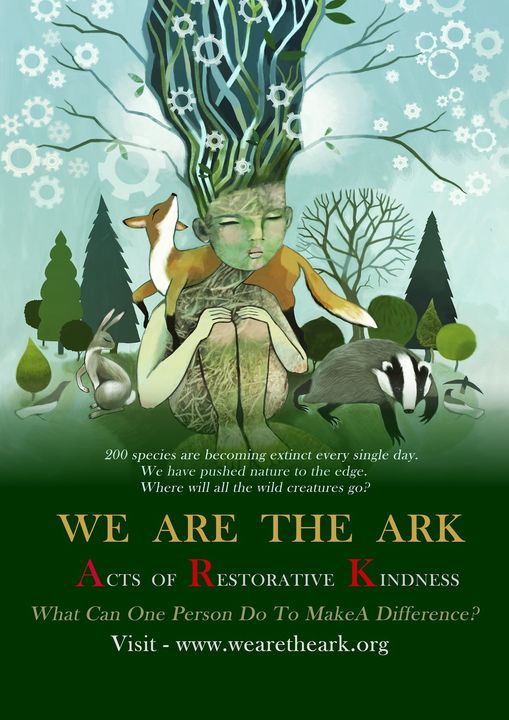
#fridaysforfuture (On Friday’s I write)
don’t forget the crazy mess we’re in – but do make your life beautiful
the problem
These are just a things you might have seen this week:
”Don’t let the perfect be the enemy of the good.”
Well, I don’t know about you but I don’t consider ”climate targets” putting us on track for 2,4°C and current policies indicating we’re headed for 2,9°C (excluding most tipping points, feedback-loops etc) to be ”good”.#MindTheGap pic.twitter.com/Pvame8Zvqs— Greta Thunberg (@GretaThunberg) May 10, 2021
About COP-21 and fossil fuels “Last hope over climate crisis requires end to coal, says Alok Sharma“
“Tracy Carty, climate policy adviser at Oxfam, said: “While the UK government’s climate commitments are world leading, it must now avoid looking like the emperor with no clothes. Appearing to support a new coalmine in Cumbria while talking about consigning coal to history sends completely the wrong signal. Supporting further oil and gas exploration in the North Sea also risk embarrassing the government in this crucial year.”
Also, you have to wonder how many last chances we have….
Sir David Attenborough: Problems that await greater than the epidemic
Sir David says the problems that await the world in the next five to 10 years because of climate change are greater than the coronavirus pandemic.
His comments come as he is named People’s Advocate for climate change ahead of the UN COP26 summit in Glasgow in November.
The meeting is viewed as crucial to keep global temperature rises below 2C. He will address world leaders at major international events over the next six months to put climate and the protection of nature at the top of their agenda.
the solutions
(Well some individual actions that will take you on the beautiful path)
ARK = ACTS OF RESTORATIVE KINDNESS
- Step 1. Give at least half of your garden or land back to nature. If not half, as much as you can manage. Try to grow as much of your own organic food as possible in the other half. Protect and guide your Ark to re-wild through natures natural processes and it will become a more and more complex ecosystem over time. All land is welcome, even a window box full of local soil that allows the native weed seeds to flourish and provide food and reproductive partners for the insects is great! It’s like a service station on a long long motorway in a desert for passing insect

- Step 2. Put up a sign saying “THIS IS AN ARK – www.wearetheark.org ” This simple action removes the shame that people feel about having a messy garden, and replaces it with pride that you’re doing something important to help all the creatures we are supposed to share the planet with. The website is set up to explain to interested neighbours what is happening there on your Ark and why it is necessary.
- Step 3. Remove any non-native ‘Invasive plants’. This is difficult on a large scale but on our individual patches of earth, we can manage it easily enough by hand and through borrowed grazers or heavy sheet mulching. These plants do not move at 100MPH. There is NO place for chemicals in an ark, they cause many more problems than they solve and are very destructive to life on all levels.
- Step 4. Step in and provide any ecosystem services that we may need to provide due to the absence of the full circle of life. The aim is to create as many different habitats as possible in the land you have, habitats that would normally be created by keystone species which are missing from our island Arks. This develops as diverse an ecosystem as possible on your patch. If you have the space, consider creating multiple habitats such as an Ark meadow, a bare earth bank, piles of deadwood, a wildlife pond, a scrubby thorny thicket, a mature native woodland, a dry-stone wall etc.
- Step 5. Native plants are the foundation stone to any ecosystem. Arks are based on the native plants in your part of the world, wherever you may be. After careful observation of your Ark, if your soil is damaged or devoid of growth, the weed seed bank may be absent. In that case, sow an Ark meadow or a wildflower meadow to reboot the system and slowly introduce as many native plants as possible. Only use locally sourced native organic seeds, cuttings and plants (if possible) as these are vital genetic material for the local insect populations and have not been grown with poisons. Building your Ark involves careful mimicking of nature’s natural processes.
- Step 6. Make holes in your boundaries to allow wildlife to pass through. Learn to share your patches of this earth.
- Step 7. ARK Lighting. The blue and white toned lighting which is now in standard use, is one of the major factors in biodiversity collapse. Please aim for darkness or make sure all your ARK lights are red in tone (Doesn’t affect them nearly as much). Make sure the outdoor lights are motion sensor only so that they only come on for short times when you need them and allow darkness to prevail in between.
- Step 8. Get together with like-minded folk and approach your councils and home owners associations, your schools and university campuses and ask for support to turn more and more park and public land into Arks.
- Step 9. Please mark your Ark on our map of Arks so that we can eventually try and connect up the dots with wildlife corridors in our future vision for this movement.
through the forest,
like the ones
in the old stories,
a shimmering bed of leaves
without a sound,
whose only task
with tiny
but frightening requests,
but in this place
beginning to lead everywhere.
you are doing right now,
and
are becoming
while you do it,
that can make
or unmake
a life,
that have patiently
waited for you,
that have no right
to go away.



